List of cities and towns in Croatia
An urbanized area in Croatia can gain the status of grad (which can be translated as town or city as there is no distinction between the two terms in Croatian) if it meets one of the following requirements:
- is the center of a county (županija), or
- has more than 10,000 residents, or
- is defined by an exception (where the necessary historical, economic or geographic reasons exist)
A city (town) represents an urban, historical, natural, economic and social whole. The suburbs comprising an economic and social whole with the city, connected with it by daily migration movements and daily needs of the population of local significance, may also be included into the composition of a city as unit of local self-government.[1]
Grad (city/town) is the local administrative equivalent of općina (translated as "municipality"), with the only distinction being that the former usually comprise urban areas whereas the latter commonly consist of a group of villages. Note that both municipalities and city/towns often comprise more than one settlement, as the administrative territory of a grad may include suburban villages or hamlets near the city/town in question. Individual settlements (or naselje in Croatian) are the smallest statistical unit counted by the Croatian Bureau of Statistics but are not administrative entities, i.e. they are governed by the municipal or city/town council of the local administrative unit they belong to.
Croatian cities are administratively subdivided into "city districts" (gradski kotari) and/or "local committee areas" (mjesni odbori) with elected councils. The City of Zagreb, as the capital, not beeing part of any county, is subdivided into "city districts"/"boroughs" (gradske četvrti) and "local committee areas" (mjesni odbori).
- In 1991 there were 70 cities and towns and 419 municipalities in Croatia organized into 20 counties (plus the city of Zagreb which is both a city and a county).[2]
- In 2001 there were 122 cities and towns (excluding Zagreb) and 423 municipalities. This was the territorial division used for the 2001 census.[2]
- In 2006 the latest revision was made, which listed a total of 127 cities and towns and 429 municipalities in Croatia. This division was used for the latest 2011 census.[3]
- In 2013 the municipality of Popovača was upgraded to town, bringing the total to 128 cities and towns and 428 municipalities.[4]
According to the Constitution, the city of Zagreb, as the capital of Croatia, has a special status. As such, Zagreb performs self-governing public affairs of both city and county.[5]
Tasks and organization
Cities, within their self-governing scope of activities, perform the tasks of local significance, which directly fulfil the citizens’ needs, and which were not assigned to the state bodies by the Constitution or law, particularly the tasks referring to urban design of settlements and dwelling, zoning and urban planning, communal activities, child care, social welfare, primary health care, personality development and primary education, culture, physical culture and sports, consumers protection, protection and improvement of the natural environment, fire and civil defence, local transport.[1] "Big cities" (cities with more than 35 000 inhabitants that are also economic, financial, cultural, public health, scientific or traffic centres) and cities that are county seats, in addition to these tasks, are also responsible for tasks regarding public roads maintenance and issuing of building and location permits.[1]
City government
City council (gradsko vijeće) is the representative body of citizens and the body of local self-government. The councillors are elected for a four-year term on the basis of universal suffrage in direct elections by secret ballot using proportional system with d'Hondt method. The executive head of the city is the mayor (gradonačelnik), also elected in direct elections by majoritarian vote (two-round system) for a four-year term (together with one or two deputy mayors).[6] He/She (with the deputy mayor/s) can be recalled by a referendum. City administrative departments and services manage administrative procedures in their areas of jurisdiction. The mayor names heads (principals) of the departments and service, who are chosen on the basis of a public competition.[1]
List of cities and towns
The following is a complete list of all officially designated 128 cities/towns in Croatia, sorted by population according to the 2011 population census. At the time of the previous census in 2001 there had been 123 cities/towns in the country and four former municipalities were administratively upgraded to towns prior to the 2011 census: Vodnjan (in 2003), and Kutjevo, Otok, and Sveta Nedelja (in 2006). In addition, the table includes data for Popovača, also a former municipality which was re-designated as town in the latest administrative revision in April 2013.[4]
The Municipal column in the table lists total population within the geographical boundary of the local administrative subdivision. This means that the figure often includes other smaller settlements such as villages or hamlets located on the outskirts or near the city/town proper. In contrast, the Town proper column lists only population of the city/town proper, without the smaller settlements which administratively belong to the city. Both numbers are given as in some cases the figures may vary dramatically (for example Velika Gorica with nearby settlements has a population of around 63,000 but the town proper has only 31,000 residents).
Note that the town of Kaštela is a unique exception in that it only exists as an administrative unit - it is legally treated as an agglomeration of seven separate settlements with populations ranging from 3,000 to 7,000, none of which is actually called "Kaštela". Its town council is located in Kaštel Sućurac.
Another set of exceptions arises from the special status of the City of Zagreb, which is considered both a county and a city, and is further subdivided into districts and into settlements. Unlike its other districts, the district of Sesvete still has the status of a standalone settlement with a population of about 70,000. This would make it a large city in itself, but it does not have the administrative status of a city.[7][8]


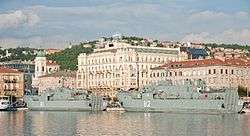


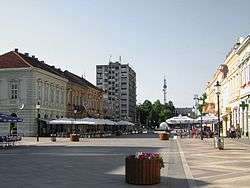
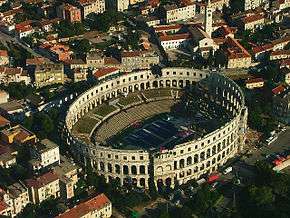
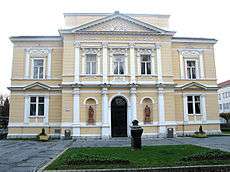
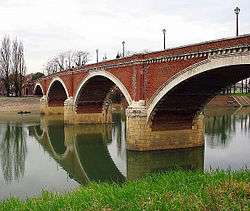
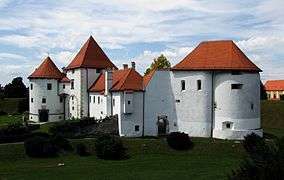

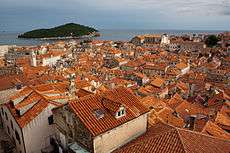
See also
Sources
- Croatian Parliament (2013-02-18). "Zakon o lokalnoj i područnoj (regionalnoj) samouoravi (pročišćeni tekst)". Narodne novine (in Croatian) (19/2013). Retrieved 2016-01-10.
- Croatian Parliament (2012-12-21). "Zakon o lokalnim izborima". Narodne novine (in Croatian) (144/2012). Retrieved 2016-04-10.
- "The Constitution of the Republic of Croatia (consolidated text)". Croatian Parliament. Retrieved 2016-10-04.
References
- 1 2 3 4 "Zakon o lokalnoj i područnoj (regionalnoj) samoupravi (pročišćeni tekst)" [Local and Regional Self-Government Act (consolidated text)]. Narodne novine (in Croatian) (19/2013). 18 February 2013. Retrieved 5 October 2016.
- 1 2 "Explanation on changes of the territorial constitution of the Republic of Croatia from 1991 to 2001". Croatian Bureau of Statistics. Retrieved 13 January 2011.
- ↑ "Census of Population, Households and Dwellings 2011 - Notes on Methodology". Croatian Bureau of Statistics. Retrieved 27 January 2014.
- 1 2 "Popovača dobila status grada". Poslovni dnevnik (in Croatian). 12 April 2013. Retrieved 27 January 2014.
- ↑ The Constitution of the Republic of Croatia (consolidated text) - Croatian Parliament.Retrieved 5 October 2016.
- ↑ "Zakon o lokalnim izborima" [Local Elections Act]. Narodne novine (in Croatian) (144/2012). 21 December 2012. Retrieved 1 October 2016.
- ↑ "Population by Age and Sex, by Settlements, 2011 Census: City of Zagreb". Census of Population, Households and Dwellings 2011. Zagreb: Croatian Bureau of Statistics. December 2012.
- ↑ "Population by Age and Sex, by Districts of City of Zagreb, 2011 Census". Census of Population, Households and Dwellings 2011. Zagreb: Croatian Bureau of Statistics. December 2012.
External links
- Croatian Bureau of Statistics census 2011 initial results
- From the World Gazetteer:
- Map of largest cities in Croatia at Archive.is (archived 2012-12-17)
- Population of cities and towns in Croatia at Archive.is (archived 2012-12-11)
- Zakon o područjima županija, gradova i općina u Republici Hrvatskoj (Croatian)